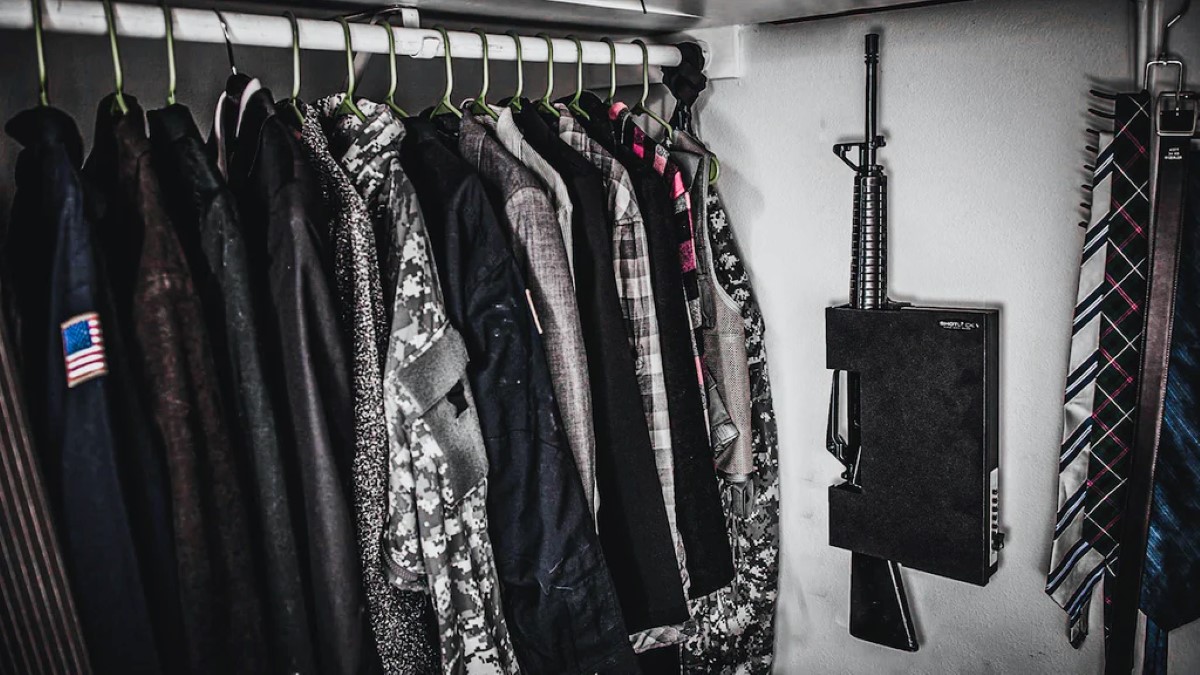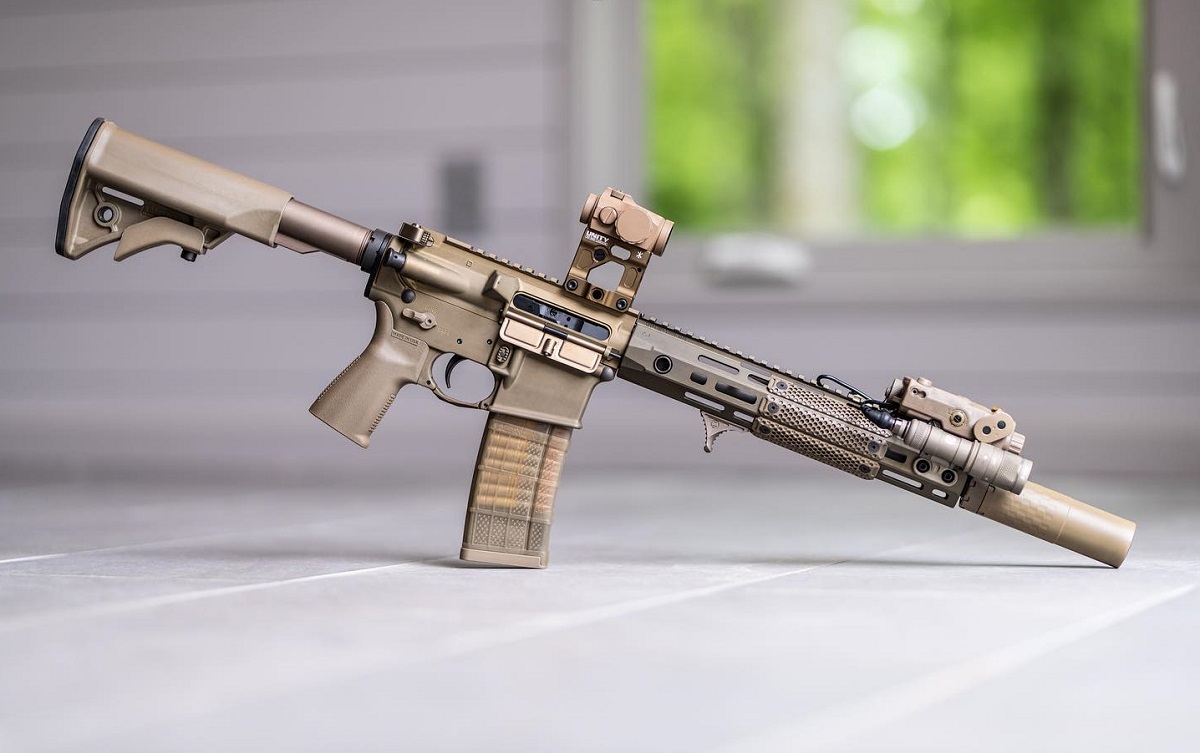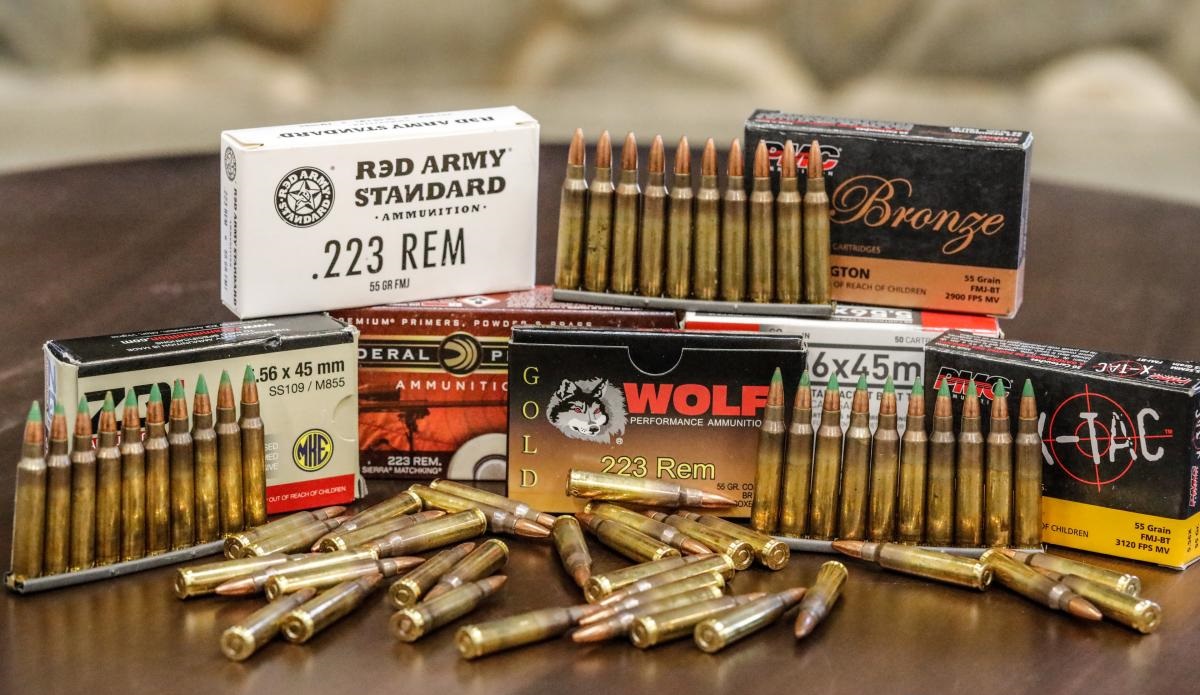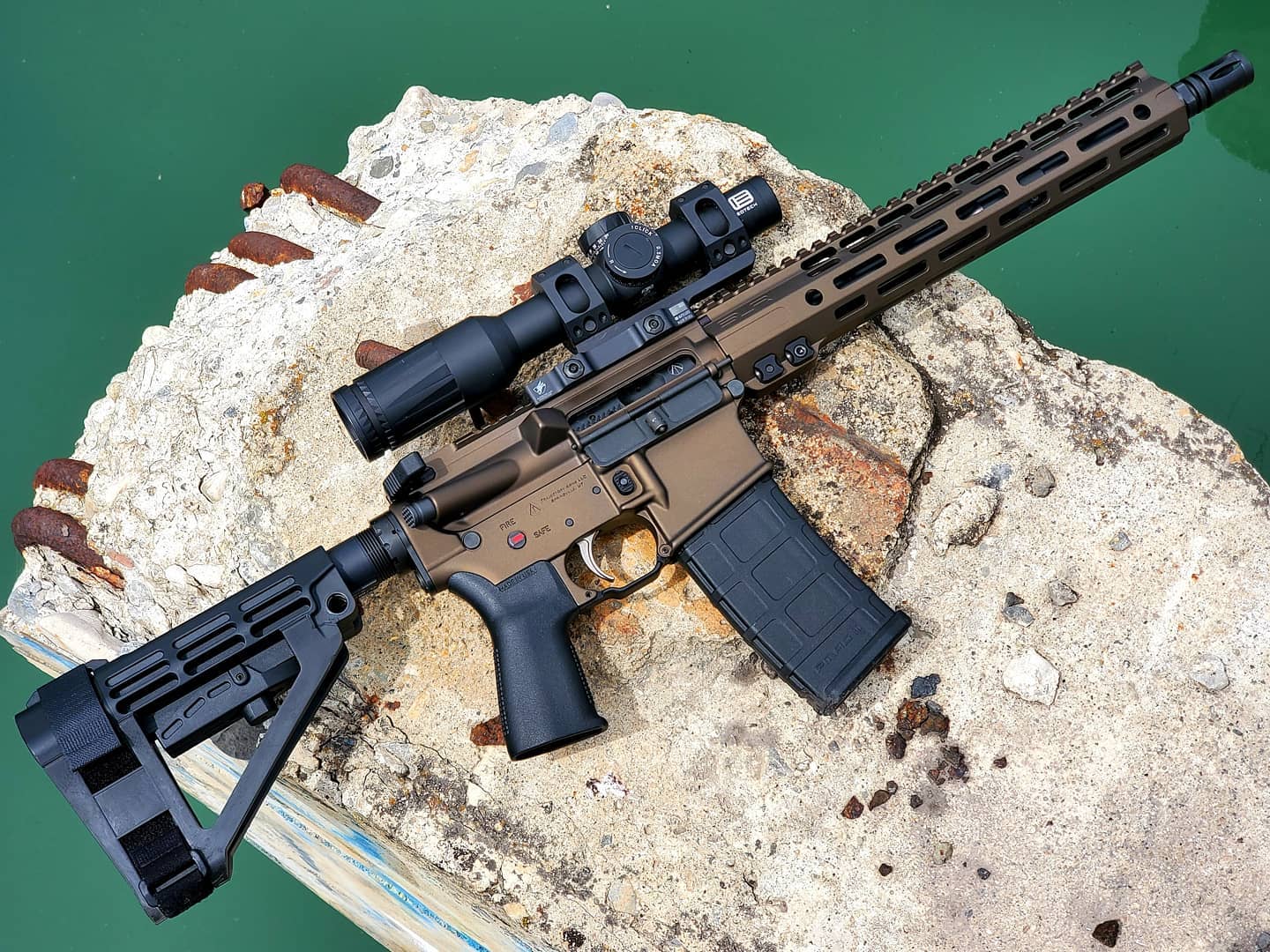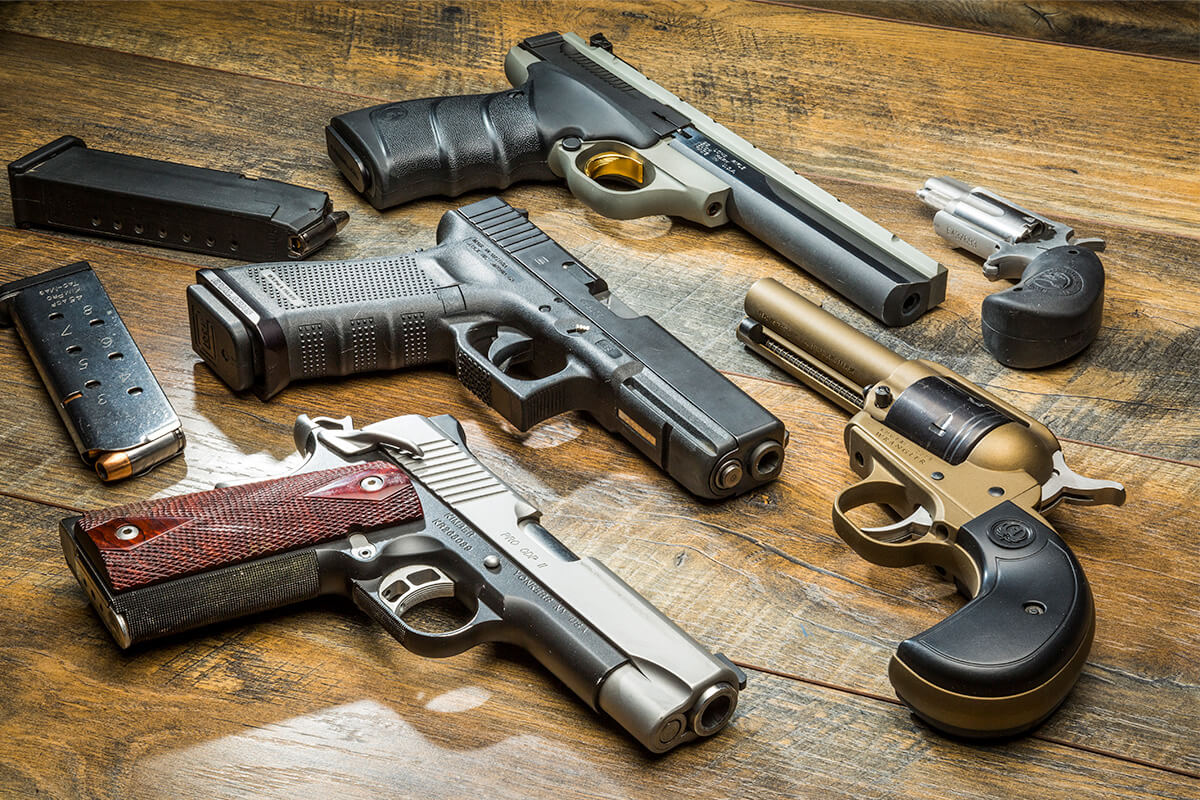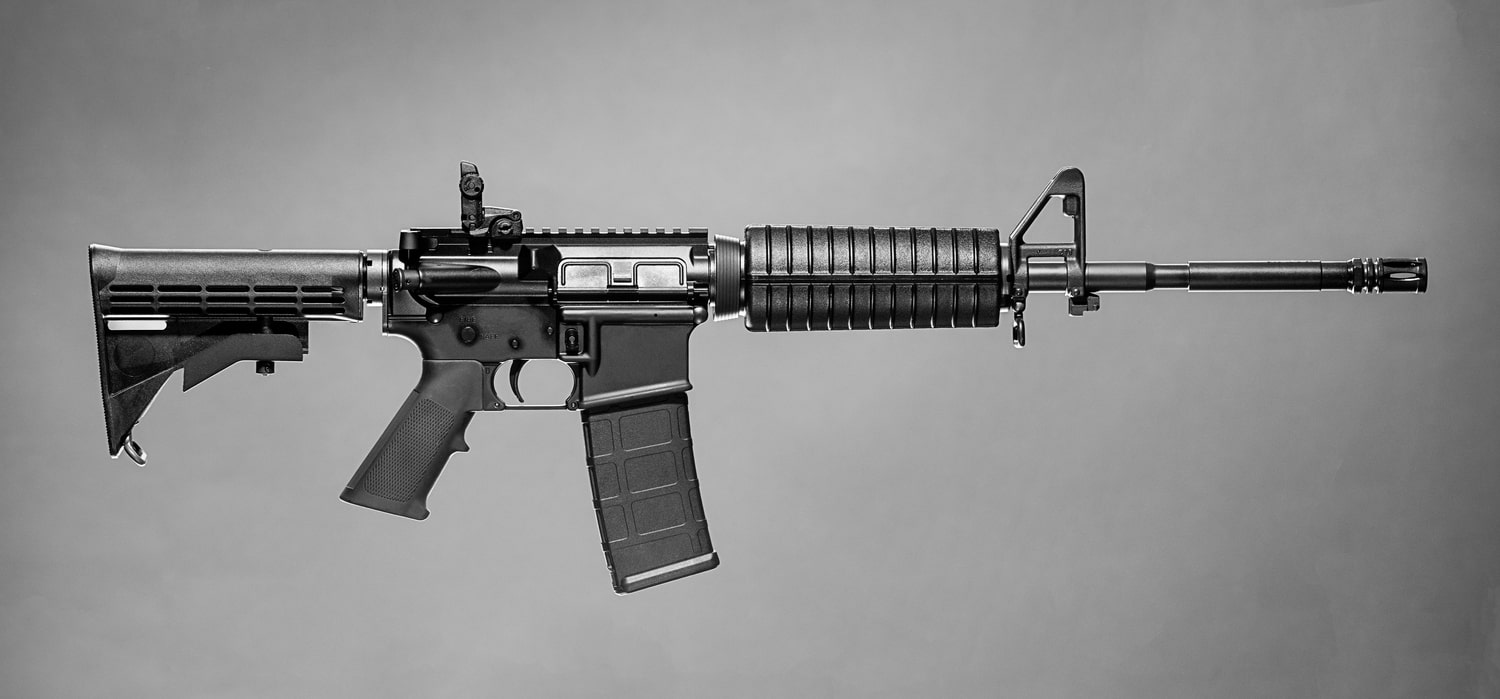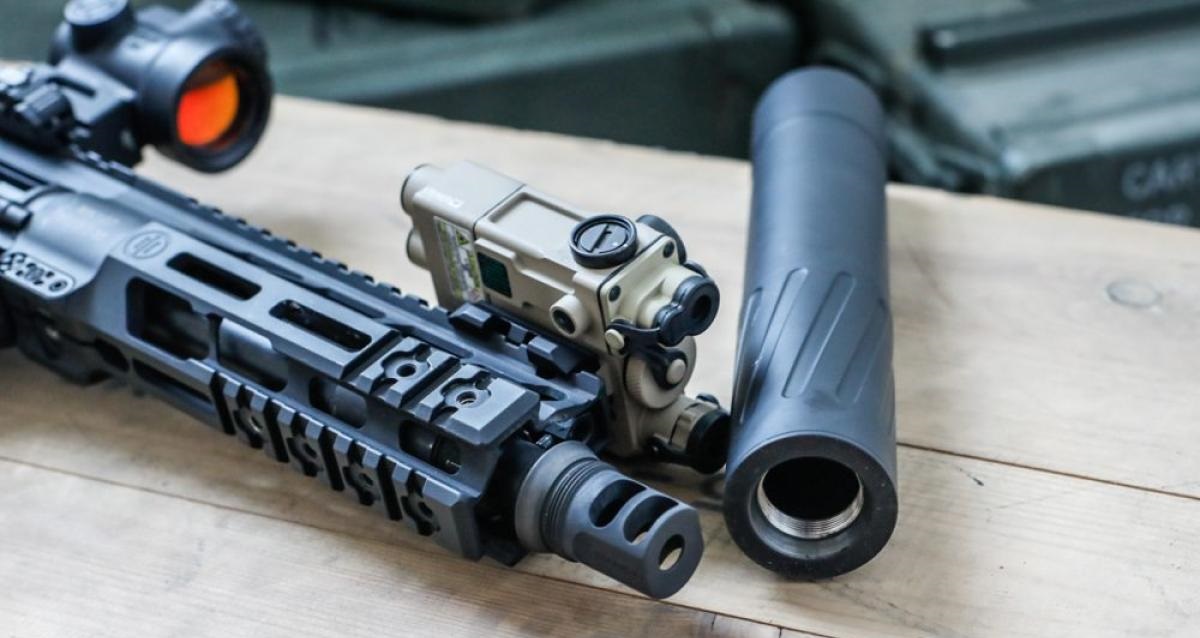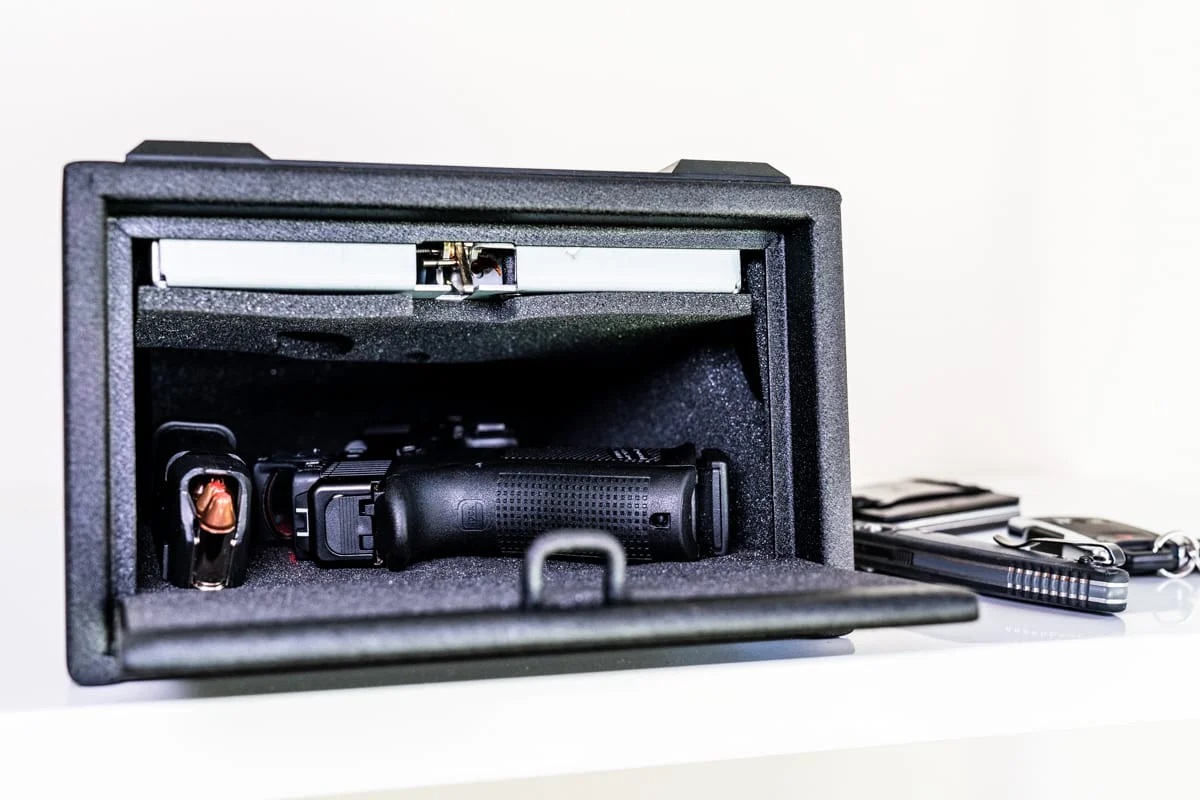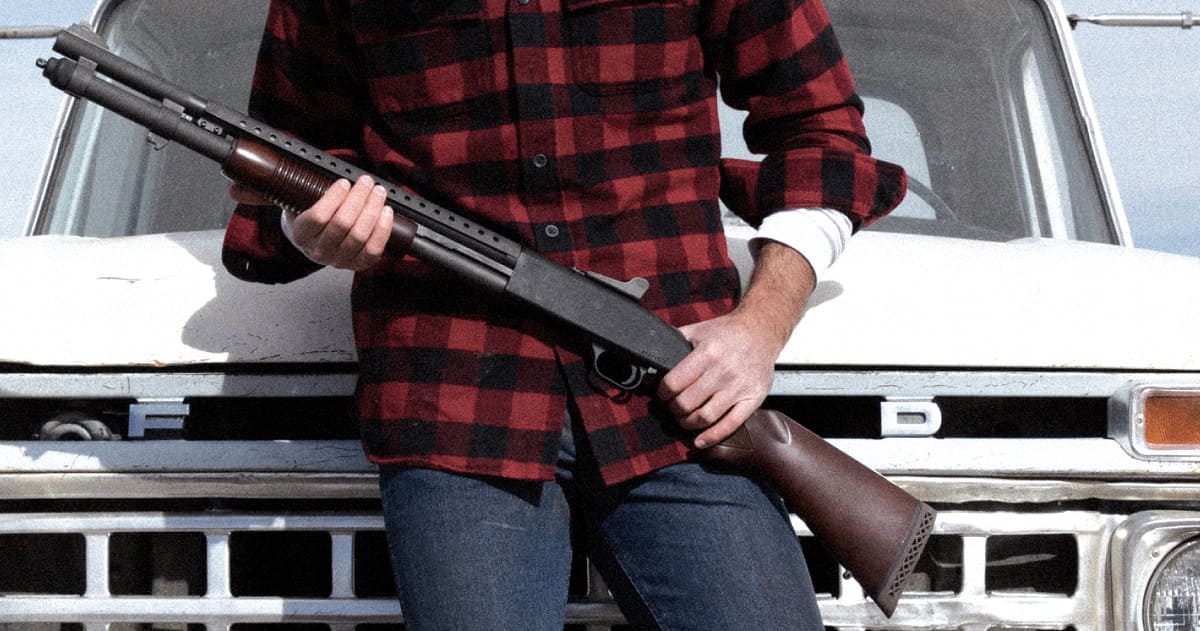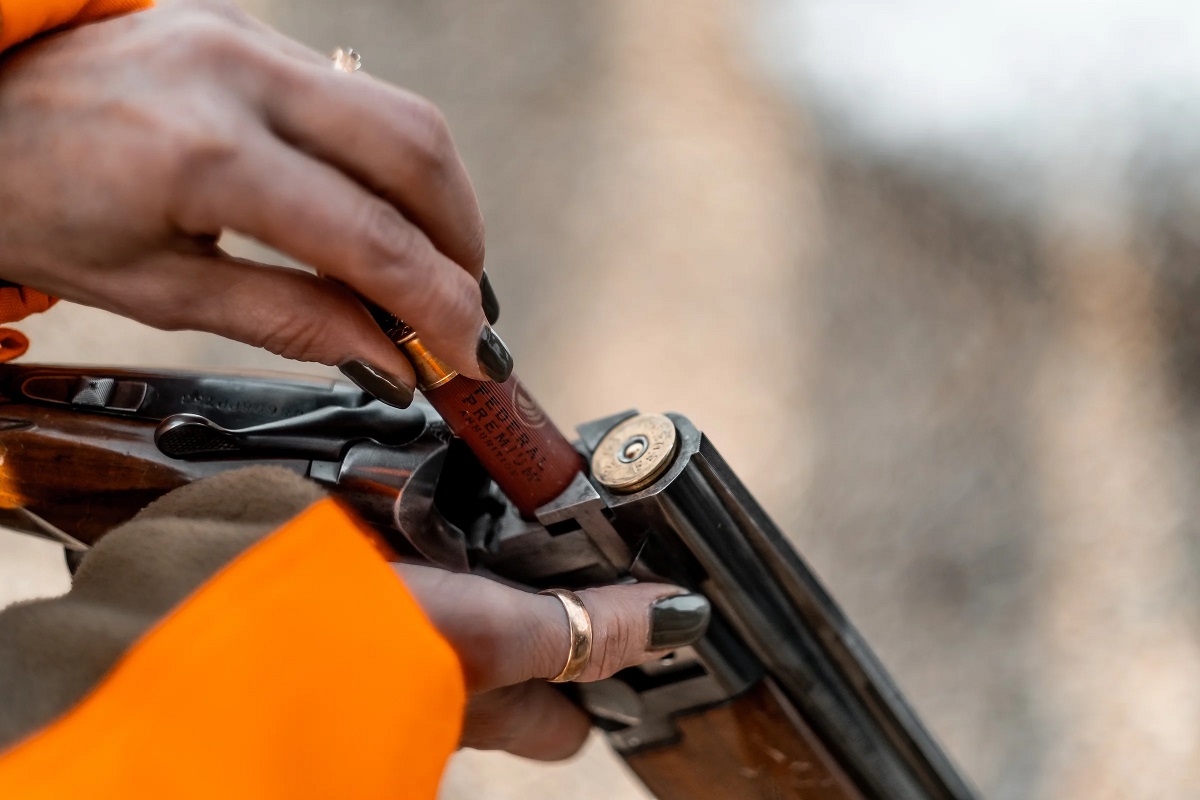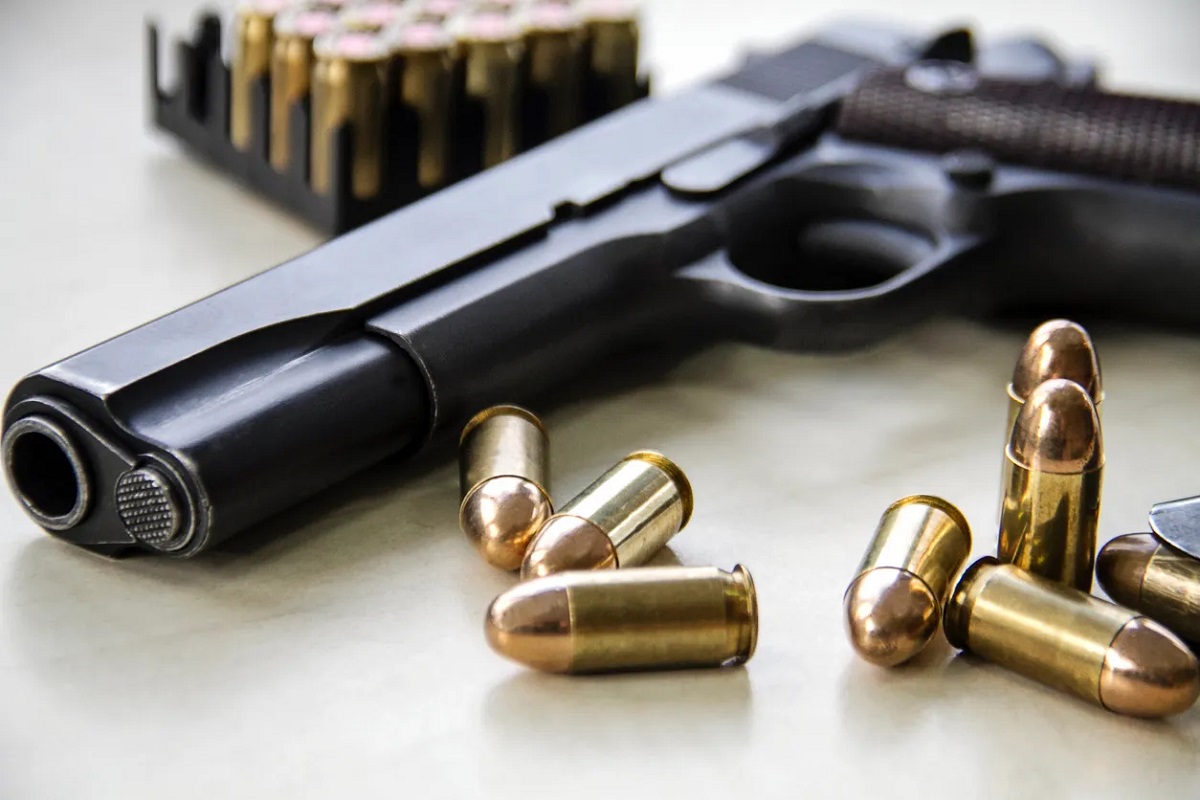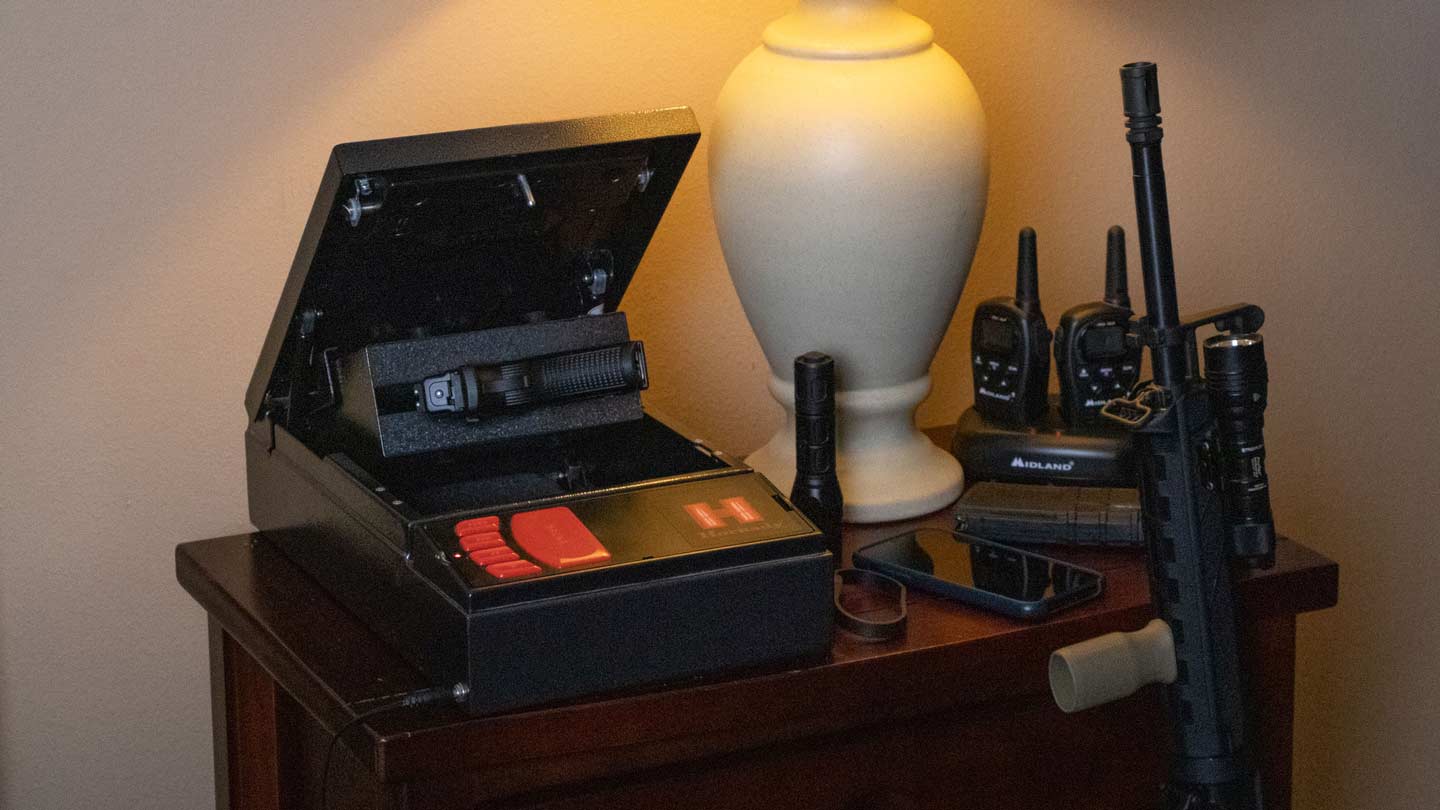Home>Home Security and Surveillance>How To Store AR For Home Defense In California
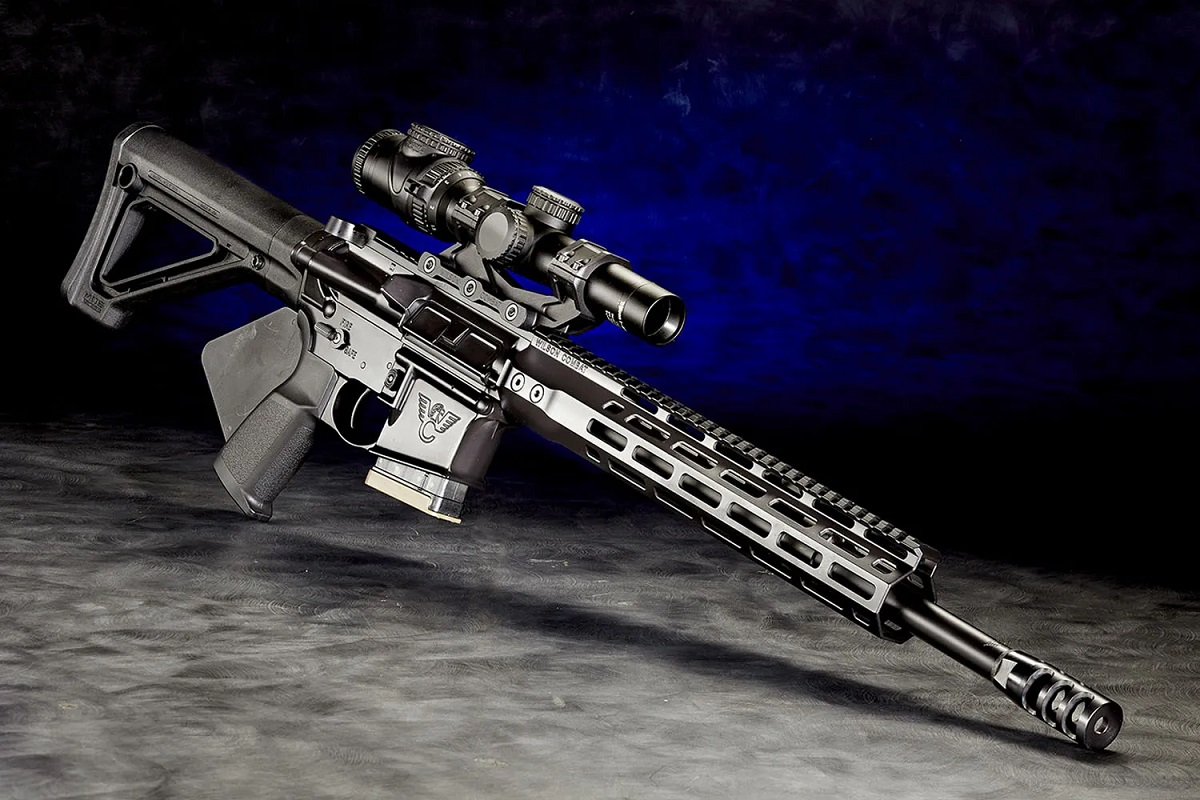

Home Security and Surveillance
How To Store AR For Home Defense In California
Modified: March 6, 2024
Learn how to properly store AR for home defense in California. Improve your home security and surveillance with our expert tips and guidance.
(Many of the links in this article redirect to a specific reviewed product. Your purchase of these products through affiliate links helps to generate commission for Storables.com, at no extra cost. Learn more)
Introduction
Welcome to the world of home security and surveillance. In today’s uncertain times, ensuring the safety of your home and loved ones has become a top priority for many. One of the most effective ways to protect your home is by investing in a comprehensive home security and surveillance system. With the advancement of technology, home security systems have become smarter, more user-friendly, and more effective than ever before.
In this article, we will explore the topic of home security and surveillance in depth, with a specific focus on the importance of having a well-designed system and the various features and options available in the market today. Whether you are new to the field or have some experience, this guide will provide you with valuable insights and practical advice to help you make informed decisions when it comes to protecting your home.
When it comes to home security, there are several key components that play a crucial role in ensuring the safety of your home. These include surveillance cameras, alarms, motion sensors, access control systems, and monitoring services. We will delve into each of these components, discussing their importance, functionality, and best practices for implementation.
Furthermore, we will discuss the different types of surveillance cameras available, including wired and wireless options, as well as the pros and cons of each. We will also explore the latest advancements in surveillance technology, such as high-definition cameras, night vision capabilities, and remote viewing options.
In addition to the core components of a home security system, we will also touch upon the importance of integrating smart technology into your setup. From voice-controlled devices to smartphone apps, the integration of smart technology allows for greater convenience, flexibility, and control over your home security system.
Throughout this article, we will emphasize the importance of proper installation and configuration of your home security system. We will provide step-by-step guides and helpful tips to ensure that you get the most out of your investment and maximize the security of your home.
Lastly, we will discuss the role of professional monitoring services and the benefits they provide in terms of round-the-clock surveillance and immediate response to potential security threats.
By the end of this article, you will have a solid understanding of the key components of a home security and surveillance system, the various features and options available in the market, and the best practices for implementing and maintaining an effective system. Whether you are looking to upgrade your current setup or starting from scratch, this guide will serve as your ultimate resource in the world of home security and surveillance.
Key Takeaways:
- Owning an AR-15 for home defense in California comes with legal responsibilities, including storing it securely in compliance with state regulations to prevent unauthorized access and ensure safety.
- Choosing the right AR-15 for home defense involves considering factors like caliber, barrel length, and accessories, while also prioritizing reliability and adherence to California’s strict firearm laws.
Read more: How To Store AR-15 For Home Defense
Understanding California’s Laws on Home Defense
When it comes to home defense, it is essential to be aware of the specific laws and regulations in your state. In California, there are several legal considerations that homeowners must take into account to ensure they are within the boundaries of the law while protecting themselves and their property.
One key aspect of California’s laws on home defense is the concept of “Castle Doctrine.” Under this doctrine, individuals have the right to use necessary force, including deadly force, to defend themselves, their family, and their home from an intruder who poses an imminent threat of harm or death. However, it is important to note that the use of deadly force must be proportionate to the threat faced, and there should be no reasonable alternative to using such force.
It is also important to understand that California follows the principle of “duty to retreat” in certain situations. This means that if a person can safely retreat from a dangerous situation without exposing themselves or others to harm, they are generally expected to do so rather than resorting to using force. However, this duty to retreat does not apply within your own home, where you have the right to stand your ground and use necessary force to protect yourself and your family.
Another crucial aspect to consider is the use of firearms for home defense in California. The state has strict regulations on the acquisition, possession, and use of firearms. To legally possess a firearm, individuals must obtain a Firearm Safety Certificate, complete a background check, and comply with other requirements imposed by the state.
Additionally, California prohibits certain types of firearms, such as assault weapons, and imposes restrictions on high-capacity magazines. It is important to familiarize yourself with these regulations and ensure compliance to avoid potential legal consequences.
When it comes to storing firearms in your home, California law requires that firearms be stored in a locked container or equipped with a trigger lock when not in use. This is to prevent unauthorized access and ensure the safety of those within your home as well as the community at large.
It is crucial to understand that while the law allows for the use of necessary force to defend yourself, it is always advisable to prioritize your safety and the safety of your loved ones. If you find yourself in a potentially dangerous situation, contact law enforcement authorities and follow their instructions while taking steps to protect yourself to the best of your abilities.
Understanding the laws and regulations surrounding home defense in California is essential to ensure that you act within the boundaries of the law while protecting yourself and your property. It is recommended to consult with legal professionals or local law enforcement agencies to obtain the most up-to-date and accurate information regarding home defense laws in your area.
Choosing the Right AR for Home Defense
When it comes to home defense, having a reliable and effective firearm is of utmost importance. The AR-15, a popular choice for home defense, offers a combination of versatility, accuracy, and ease of use. However, choosing the right AR-15 for your specific needs requires careful consideration and understanding of its features.
First and foremost, it is essential to select an AR-15 with a suitable caliber. The two common calibers for AR-15 rifles are .223 Remington and 5.56x45mm NATO. While they may seem similar, it is crucial to understand their differences. The .223 Remington is primarily designed for civilian use, while the 5.56x45mm NATO is the standard military round. It is advisable to choose a rifle chambered in 5.56x45mm NATO as it allows for the use of both types of ammunition, providing you with more versatility.
Next, consider the barrel length of the AR-15. Shorter barrels provide better maneuverability, especially in close quarters, while longer barrels offer improved accuracy at longer distances. A barrel length of 16 inches is a popular choice, as it strikes a good balance between maneuverability and accuracy. However, if you are primarily concerned with home defense, a slightly shorter barrel length, such as 14.5 or 10.5 inches, may be more suitable.
Another critical factor to consider is the AR-15’s furniture and accessories. Furniture refers to the stock, handguards, and pistol grip of the rifle. It is essential to choose ergonomic and comfortable furniture for better control and handling of the firearm. Additionally, the availability of rails on the handguard allows for the attachment of accessories such as lights, lasers, and optics, enhancing your ability to effectively engage targets in low-light situations.
Furthermore, consider the trigger system of the AR-15. A good trigger can greatly improve accuracy and control. Some AR-15 models come with standard mil-spec triggers, while others feature upgraded triggers with lighter pull weights and crisper breaks. It is worth investing in a quality trigger system that suits your preferences and shooting style.
Lastly, reliability and brand reputation play a significant role in choosing the right AR-15 for home defense. Look for established manufacturers with a proven track record of producing reliable firearms. Research customer reviews and seek recommendations from trusted sources to ensure the quality and longevity of your chosen AR-15.
Ultimately, selecting the right AR-15 for home defense requires careful consideration of factors such as caliber, barrel length, furniture and accessories, trigger system, and reliability. Take the time to educate yourself, seek expert advice, and test different options to make an informed decision. Remember, the right AR-15 will empower you to effectively defend your home and loved ones in the event of a threat.
Safe Storage Options for AR in California
Ensuring the safe storage of your AR-15 is not only important for preventing unauthorized access but is also a legal requirement in California. The state has specific regulations regarding the storage of firearms to promote safety and prevent accidents, especially when it comes to homes with children or individuals who may pose a risk.
One of the most secure and commonly used options for storing an AR-15 is a gun safe. Gun safes provide a locked and sturdy storage solution that offers protection against theft, unauthorized access, and damage. Look for safes that are specifically designed for firearms and meet the California Department of Justice (DOJ) standards. These safes will have features such as a secure locking mechanism and tamper-resistant construction.
If a gun safe is not feasible due to space constraints or budget limitations, an alternative option is a lockbox. Lockboxes are smaller, portable, and can be easily secured to a stationary object in your home. They typically have a combination lock or key lock and provide a level of security against unauthorized access.
Another option to consider is a biometric safe or lockbox. These safes use fingerprint recognition technology to grant access, ensuring that only authorized individuals can unlock and access the firearm. Biometric safes are quick to open and provide an added layer of security while maintaining accessibility in case of an emergency.
In addition to dedicated storage options, an important aspect of safe storage is keeping your AR-15 unloaded and ammunition stored separately. This helps minimize the risk of accidental discharge and ensures that anyone who accesses the firearm must take additional steps to make it functional.
When storing your AR-15, it is also essential to consider the environmental conditions. Firearms should be stored in a dry and controlled environment to prevent rust and damage. You may consider using dehumidifiers or desiccant packs to maintain the appropriate humidity levels within the storage area.
Lastly, it is crucial to educate and train members of your household, especially children, about firearm safety. Teach them about the potential dangers of firearms, the importance of never handling a firearm without adult supervision, and the significance of respecting safe storage practices.
Overall, safe storage options for your AR-15 in California include gun safes, lockboxes, and biometric safes. Remember to store the firearm unloaded and keep ammunition separate. Consider the environmental conditions of your storage area and prioritize educating household members about firearm safety. By adhering to these practices, you can ensure the safety of your AR-15 and maintain compliance with California’s storage regulations.
Store your AR for home defense in California by keeping it unloaded and secured with a trigger lock or in a locked safe. Keep ammunition separate and out of reach of unauthorized individuals.
California-Approved Methods for Storing AR
In California, it is important to adhere to specific storage requirements for firearms, including the AR-15. These regulations aim to promote safety and prevent unauthorized access or use of firearms. Being aware of the approved methods for storing an AR-15 will help you comply with the law and ensure the security of your firearm.
One California-approved method for storing an AR-15 is to use a gun safe or lockbox. The California Department of Justice (DOJ) provides specific guidelines for firearm safes that meet their approved standards. Look for safes that have been tested and meet these requirements, as they provide the highest level of security and compliance. The DOJ-approved safes will have features such as sufficient thickness and strength in the construction, a locking mechanism that prevents unauthorized access, and the ability to be securely bolted to the floor or wall.
Another approved storage option is to use a cable lock or trigger lock. These locks are designed to prevent the firearm from being loaded or fired by obstructing the trigger or the chamber. Cable locks are flexible and can be threaded through the action of the AR-15, securely preventing its operation. Trigger locks are specifically designed to enclose the trigger guard, preventing the trigger from being pulled.
When using a cable lock or trigger lock, it is important to store the firearm in a separate and secure location, such as a locked cabinet or gun case. This extra measure of security ensures that even if the lock is bypassed, the firearm itself remains inaccessible to unauthorized individuals.
Additionally, utilizing a DOJ-approved firearms safety device such as a DOJ-approved cable lock or trigger lock may fulfill the storage requirements set by California law. These devices have been tested and approved by the DOJ to provide an added layer of security and prevent unauthorized access to firearms.
It is important to note that California law requires firearms to be stored in a locked container or rendered inoperable with a secure locking device when not in use. This means that whether you opt for a gun safe, lockbox, or utilize a cable lock or trigger lock, the firearm must be stored securely, preventing unauthorized individuals from accessing or operating it.
Remember, complying with California’s approved methods for storing an AR-15 not only ensures legal compliance but also helps in preventing accidents and unauthorized use. Safely securing your firearm with a DOJ-approved gun safe, lockbox, or using a cable lock or trigger lock adds an additional layer of protection and peace of mind.
Before making any storage decisions, it is always best to refer to the most up-to-date information from the California Department of Justice or consult with local law enforcement for guidance on compliant storage methods for firearms in your specific area.
Read more: Why An AR-15 For Home Defense
Additional Tips for Securely Storing AR
Ensuring the secure storage of your AR-15 goes beyond simply complying with the legal requirements. By implementing additional measures, you can further enhance the safety and security of your firearm. Here are some additional tips for securely storing your AR-15:
- Choose a hidden storage location: Consider storing your AR-15 in a discreet location that is not easily visible or accessible to potential intruders. This could be a hidden compartment, a false wall, or a specially designed concealed storage unit.
- Divide and lock up components: Separate the upper and lower receivers of your AR-15 and store them in different locked containers. This adds an extra layer of security as even if an unauthorized individual gains access to one part, they will still be unable to assemble a functional firearm.
- Install an alarm system: Supplement your storage security with an alarm system that detects unauthorized access or movement. This can provide an immediate alert and deterrent in case of a break-in.
- Consider a monitored security service: Engage a professional security service that offers round-the-clock monitoring of your home. This ensures quick response times in the event of a security breach or attempted theft.
- Utilize technology: Explore smart security options such as motion sensors, security cameras, and remote access systems. These technologies can enhance the security of your storage and provide real-time alerts and monitoring.
- Keep storage codes and keys secure: Safely store the access codes, combination numbers, and keys to your storage containers in a separate and secure location. This ensures that even if unauthorized individuals gain access to your home, they won’t have the means to unlock your firearm storage.
- Regularly inspect and maintain your storage: Periodically check the condition of your storage containers, locks, and any security devices. Lubricate locks if necessary and ensure that the containers remain strong and tamper-resistant.
- Educate your household members: Continuously educate your family members or others living in your home about the importance of firearm safety and secure storage practices. Teach them about the potential risks and the proper procedures for accessing and handling firearms.
By implementing these additional tips, you can create a multi-layered approach to secure storage for your AR-15. Remember, the ultimate goal is to prevent unauthorized access, theft, and accidents while ensuring that you maintain quick and secure access to your firearm when necessary.
It is important to stay informed about any updates to the laws and regulations on firearm storage in your area. Regularly check with local law enforcement or consult legal professionals for the most up-to-date information and guidance regarding secure storage methods for your AR-15 and other firearms.
Conclusion
Home security and surveillance play a vital role in ensuring the safety and well-being of your loved ones and protecting your property. In this comprehensive guide, we have explored various aspects of home security and surveillance, focusing on key topics such as understanding California’s laws on home defense, choosing the right AR for home defense, safe storage options for AR in California, California-approved methods for storing AR, and additional tips for securely storing your AR-15.
By familiarizing yourself with California’s laws on home defense, you can ensure that you act within the boundaries of the law while protecting yourself and your family from potential threats. Understanding the concept of Castle Doctrine, duty to retreat, and the regulations surrounding firearms ownership and possession is crucial for responsible home defense practices.
Choosing the right AR for home defense requires careful consideration of factors such as caliber, barrel length, furniture and accessories, trigger system, and reliability. By making an informed decision, you can select a firearm that meets your specific needs and provides you with the confidence and capability to defend your home effectively.
When it comes to storing your AR-15, California has specific regulations aimed at preventing unauthorized access and ensuring the safety of your firearm. Gun safes, lockboxes, cable locks, and trigger locks are all approved methods for securely storing your AR-15. It is important to comply with these storage requirements while also considering additional measures such as hidden storage, component separation, and technology-based security systems to enhance the safety and security of your firearm.
By implementing these best practices and tips, you can create a comprehensive and robust home security and surveillance system that provides peace of mind and protection for your home and loved ones. Regularly educating yourself and your household members about firearm safety and storage practices, as well as keeping up-to-date with any changes in local laws, is essential to maintaining a secure home environment.
Remember, home security and surveillance are ongoing processes that require attention, maintenance, and periodic evaluation. Stay informed about the latest advancements in technology, seek expert advice when needed, and regularly assess and update your security measures to stay one step ahead of potential threats.
By prioritizing home security and surveillance, you make a significant investment in the safety and well-being of your home and loved ones. With the guidance provided in this guide, you are now equipped with the knowledge and understanding to make informed decisions and create a secure and protected home environment.
Frequently Asked Questions about How To Store AR For Home Defense In California
Was this page helpful?
At Storables.com, we guarantee accurate and reliable information. Our content, validated by Expert Board Contributors, is crafted following stringent Editorial Policies. We're committed to providing you with well-researched, expert-backed insights for all your informational needs.

